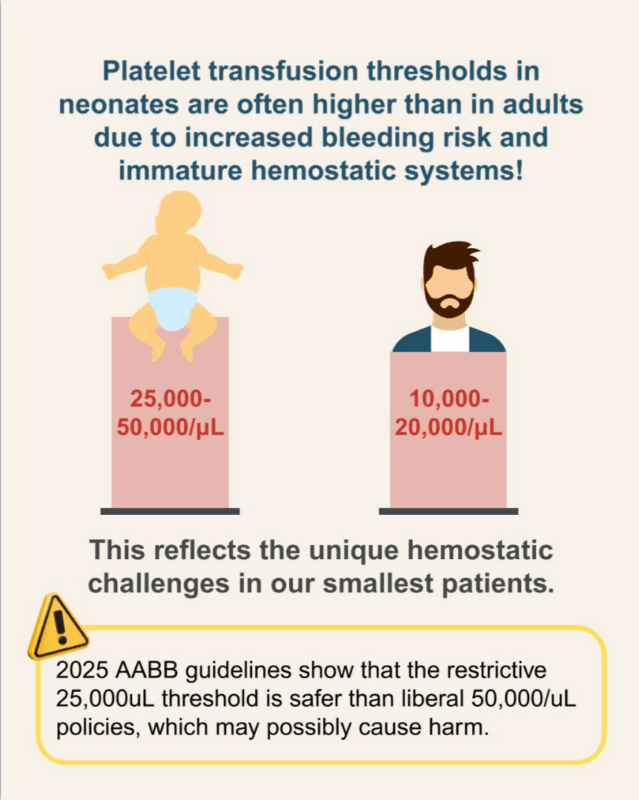
ISBT on Age-Appropriate Platelet Transfusion Thresholds: New Insights from the 2025 AABB Guidelines
International Society of Blood Transfusion (ISBT) shared an enlightening post on LinkedIn:
“DID YOU KNOW? A new series by the Pediatric Subgroup of the Clinical Transfusion Working Party
In neonates, platelet transfusion thresholds are often higher than in adults due to immature hemostatic systems and a greater risk of bleeding.
Preterm infants may require platelet counts of 25,000–50,000/μL, depending on clinical condition, while stable adults typically require only 10,000–20,000/μL.
According to the 2025 AABB Guidelines, a restrictive threshold of 25,000/μL is now considered safer than the previously used liberal 50,000/μL threshold, which may increase risk.
This highlights the importance of age-appropriate transfusion strategies that reflect the unique physiology of neonates.
Reference: Metcalf RA, Nahirniak S, Guyatt G, et al. Platelet Transfusion: 2025 AABB and ICTMG International Clinical Practice Guidelines. JAMA. 2025. doi:10.1001/jama.2025.7529”
Find the reference here:

Follow the newest insights in platelet science with Hemostasis Today.
-
Dec 18, 2025, 17:13Daria Camilli on EuroBloodNet and EHC Collaboration for Bleeding Disorders
-
Dec 18, 2025, 16:50Marie Cambot on Innovhem’s Quantification of The HbF/HbS Ratio for SCD
-
Dec 18, 2025, 16:26Yogesh Rathod on Hematological Issues and ICU
-
Dec 18, 2025, 16:09Carlos Doti: I’m Reminded Why ASH is Such a Powerful Close to The Year
-
Dec 18, 2025, 15:23Michael Hadley: Well-Timed ACC Statement Just Out in JACC Journals
-
Dec 18, 2025, 15:12Wolfgang Miesbach on Insights from Guy Young’s ASH2025 Session on Next-Generation Gene Therapy
-
Dec 18, 2025, 14:15Plasma-Derived Therapy for Hemophilia in The Updated European Medicines Agency’s Union List
-
Dec 18, 2025, 13:55Laurent Bertoletti: BAT-VTE is One of 7 Projects Funded Under the EFFECT Trial Call!
-
Dec 18, 2025, 13:34Alexandru Stieber Explores VEXAS Syndrome
